Identifying Butterflies in a Butterfly Garden
Recently I was given the task of making a video about the Kaleidoscope Butterfly Garden at the North Carolina Zoo. It’s a fantastic little display in the the middle of the zoo that contains thousands of individual butterflies of dozens of species, all hatched from chrysalises’ brought in for visitors. Here is a glimpse at what you’ll likely see.
Butterfly Species in the House
The butterfly house at the NC Zoo has over 35 species from around the world. They’re brought in via their chrysalis and they hatch into the exhibit, all of which is on display. Here are a few of the more common butterflies that you can look forward to seeing on exhibit.
Monarch
The Monarch is one of North America’s most recognizable butterflies. It’s striking orange, black and white wings can be seen moving through the country from milkweed plant to milkweed plant. These spectacular butterflies will migrate every year north from their wintering grounds in the mountains of Mexico. If you love monarchs, consider planting some native milkweed plants in your yard so they can feed and lay their eggs for the next generation to continue their journey.
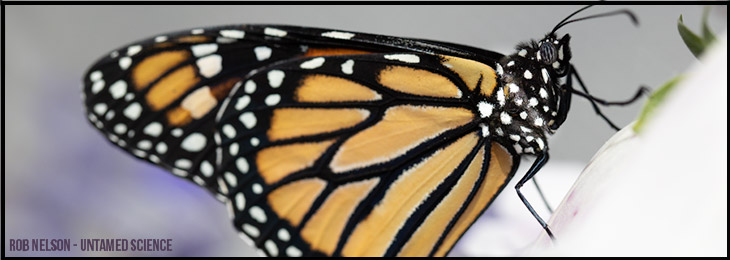
King Swallowtail
Swallowtails may take the trophy for the most majestic butterfly in the Americas. Although, that’s a tough trophy to take home given how spectacular the butterflies are in general. Swallowtails are large though. They’re often distinguished by their black and yellow wings that have small “tails” on the wings.
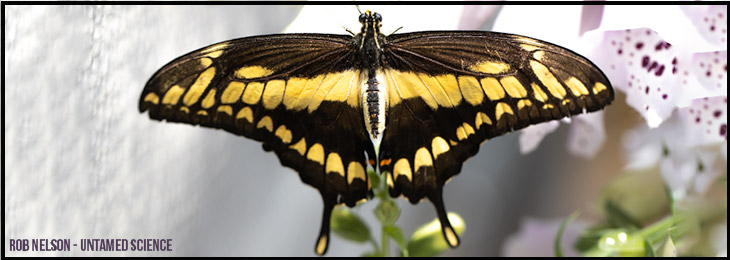
Pipe-vine Swallowtail
The pipevine swallowtail is a much less color than the other swallowtails. Pictured below is the female. Males will have striking blue mixed into their hind wings.
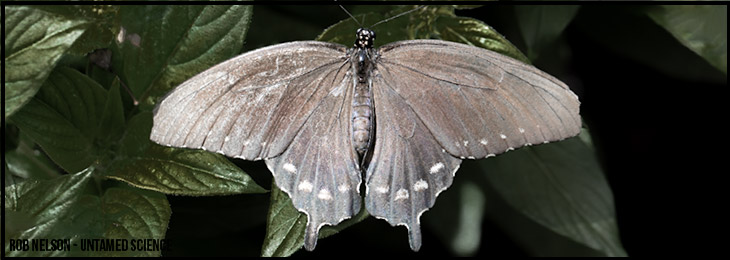
Zebra Longwing
Zebra longwings are typical of the tropical forests. It’s range starts in South America and extends into the southern US. Florida has this as their state butterfly.
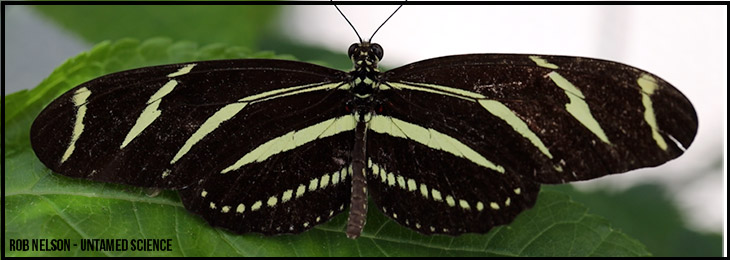
Blue-banded Purplewing
These small, yet brilliantly colored blue butterflies are found in central and South America.
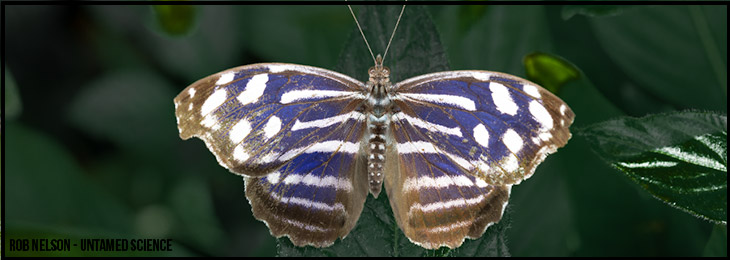
Blue Morpho Butterfly
Nothing says the rainforest more than the flitter of blue morphos. With wings open you’ll see the brilliant blue. With wings closed they’re almost entirely camouflage minus a few striking “eyes” on their wings.
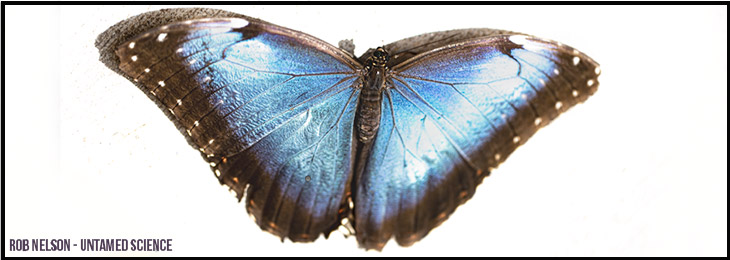
Owl Butterfly
The “eyes” of the owl butterfly are even more distinct than those of the morphos. In fact, the owl butterflies are distinguished from morpho butterflies in that they have only this one spot on each side.
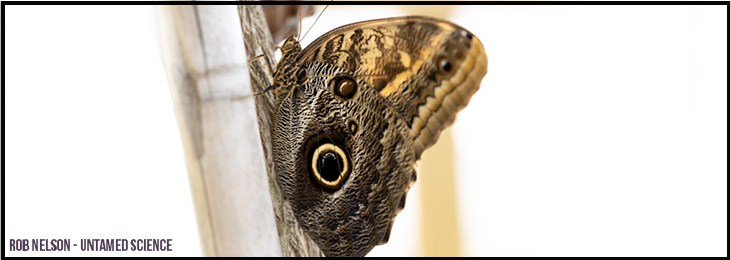
Paper Kite Butterfly
The paper kite is a large black and white butterfly of SE Asia.
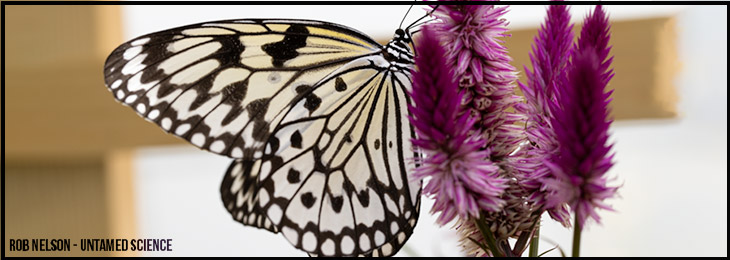
Indian Leafwing Butterfly
Open this butterfly sports a brilliant blue and gold patter. Closed however, the wings look just like a dead leaf. It’s a striking example of camouflage.
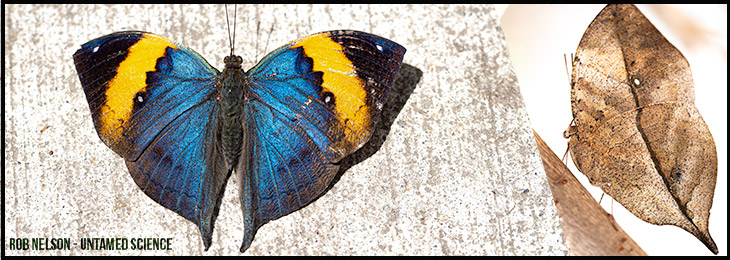
Glasswinged butterfly
Glasswings are one of most delicate butterflies in the exhibit. Their wings are completely translucent minus a few orange and black patterns that shape the wing.
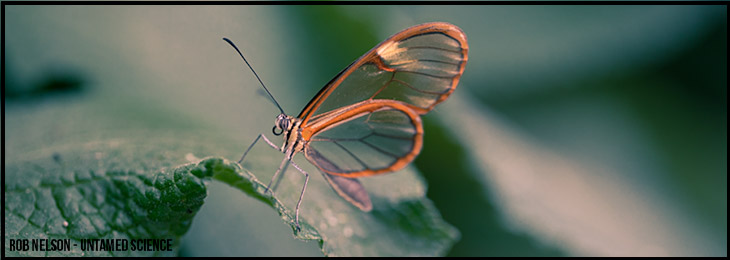
Julia Butterfly
The Julia butterfly (aka. Julia heliconian or flambeau) is a bright orange butterfly found from south Texas and Florida, south to Brazil.
![]()
Malachite
This is a beautiful green and black spotted butterfly.
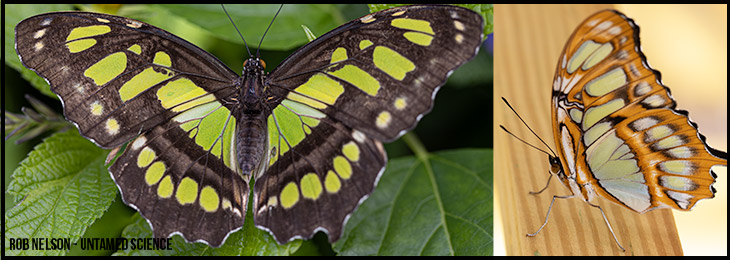
Now Go See Them
Go check out the NC Zoo and see what you can find. More information here.
































































































